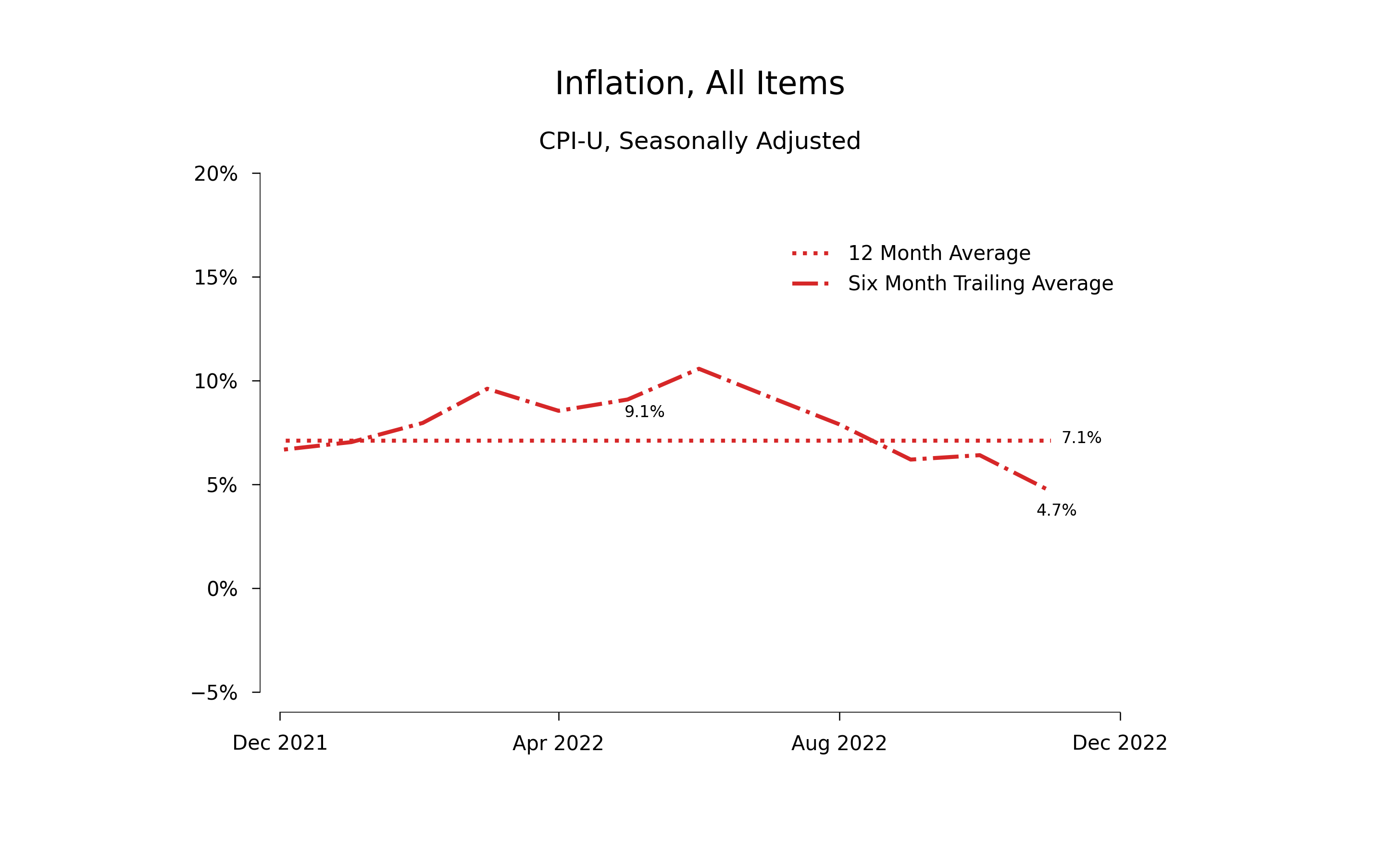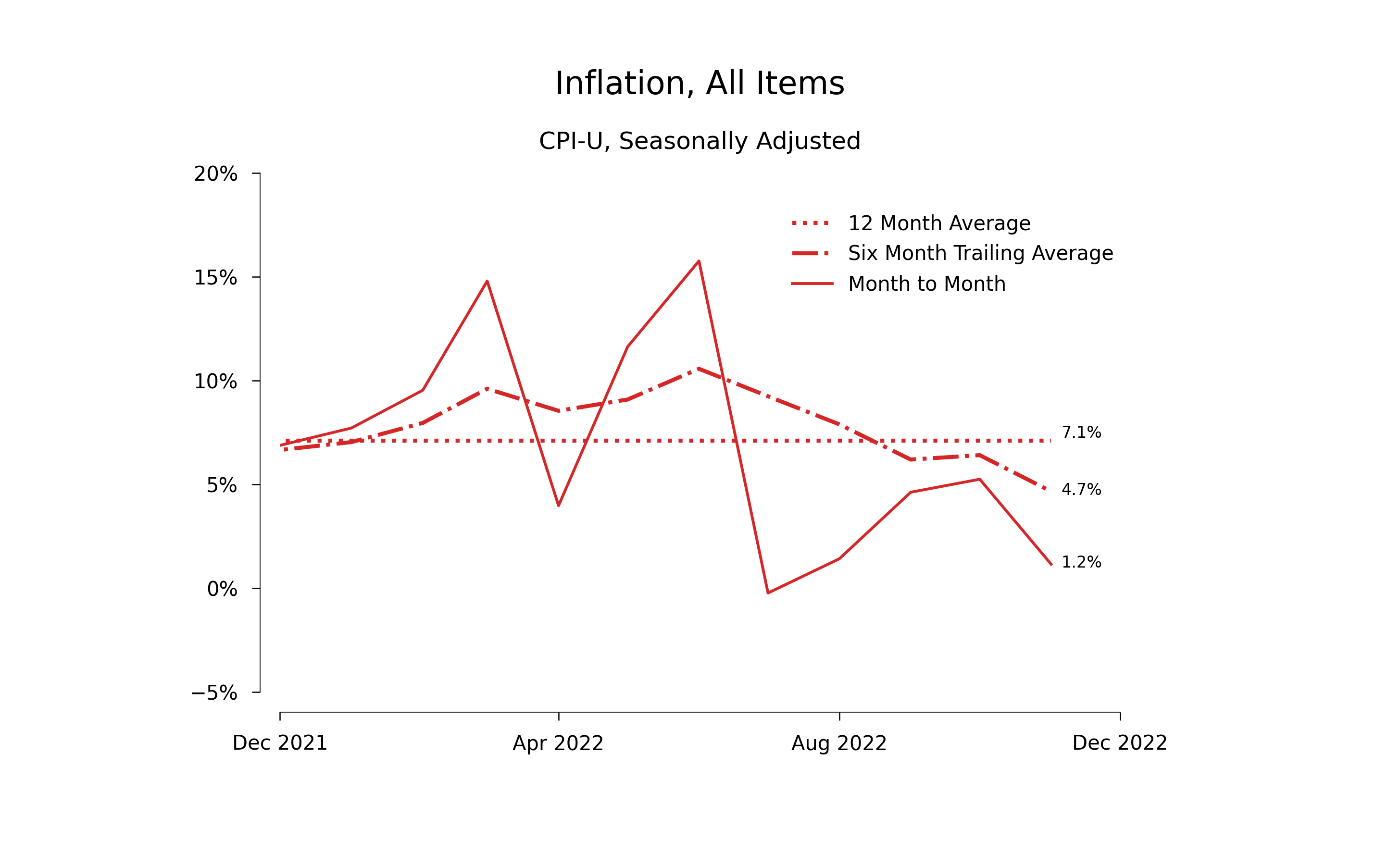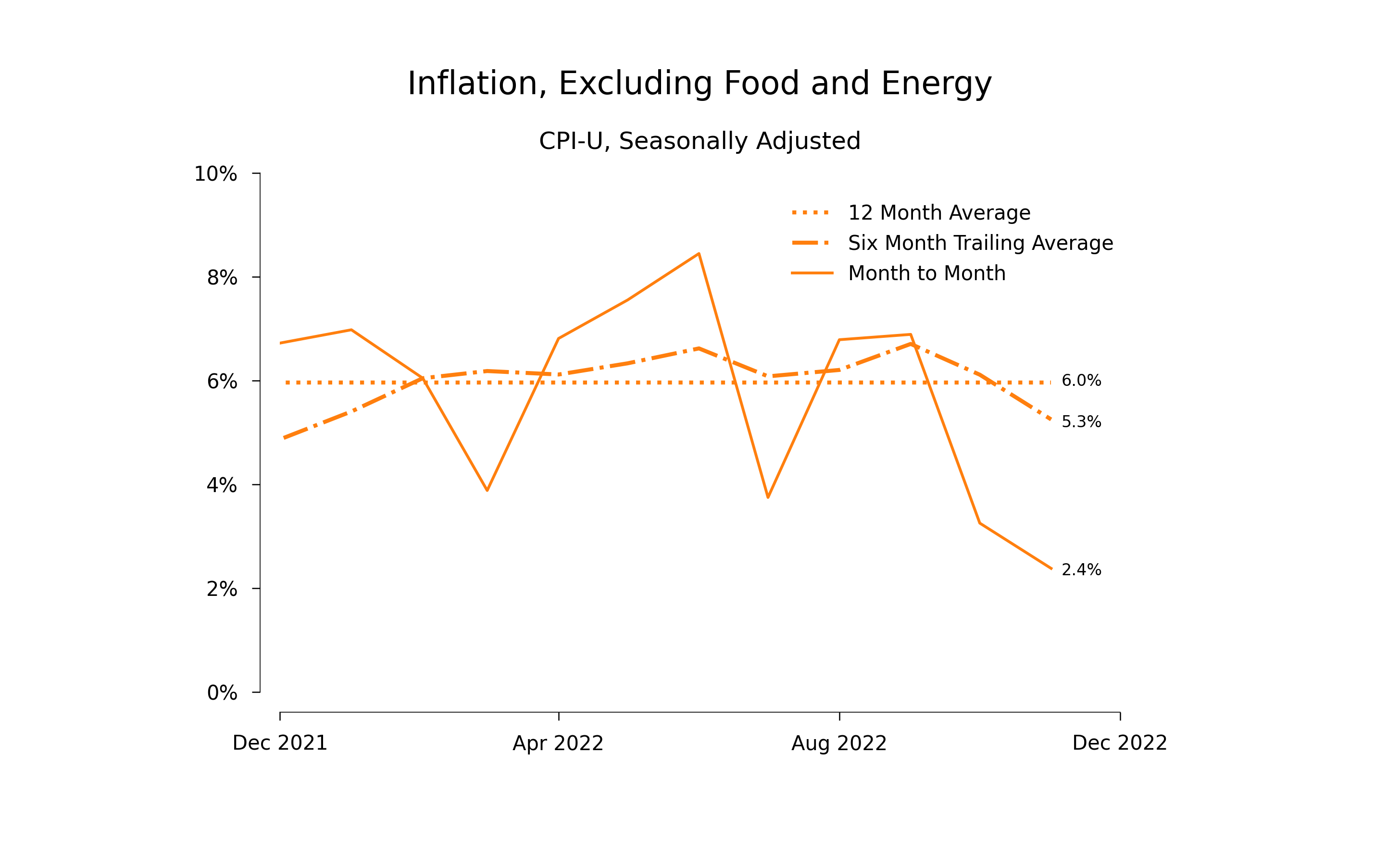Good News on Inflation
If you are worried that the decision today by the Fed to increase rates by only 50 basis points is a sign that it is giving up on the fight against inflation too soon, you may not realize how good was the news that we received yesterday about the current rate of inflation.
The reason you might have missed this good news is that most discussions of the data focus on an average inflation rate observed over several months. Averaging has the advantage that it filters out noise but the disadvantage that it can hide news about a change in the underlying trend.

This figure uses a dotted line to plot the average rate of inflation for the last twelve months (Nov. 2021 to Nov. 2022). As news reports emphasized, this average stands at 7.1%. It also uses a line with a “dash-dot” pattern to show for each month what the average rate of inflation was for the previous six months. The final value shows that the average rate of inflation for June-Nov 2021 was 4.7%. The number in the middle of the figure shows that in May 2022, the average inflation rate over Dec. 2021 - May 2022 stood at 9.1%, close to twice the current value.
Taking an average over the last six months instead of the last 12 months reveals that the monthly inflation rate has come down substantially. The 12-month average of 7.1% is almost surely a substantial overestimate of the current rate of inflation.
But even a six-month average can hide information about the underlying trend. As a result, the next figure adds in a solid red line that shows the monthly inflation rate over the last 12 months with no averaging.

This new line shows that the monthly data are in fact, very noisy. They jump up and down from one month to the next. It would have been a mistake to conclude back in April that the low rate for that one month meant that the rate would be permanently lower. It makes sense to take an average of some sort to filter out the temporary ups and downs. But it also makes sense to look at the raw monthly data too. What we see when we do is that this measure of the inflation rate has been consistently lower since July and now stands at a mere 1.2%.
Because there is so much noise in the prices for food and energy, economists track a separate price index that excludes these two types of goods, a price index known as “All Item Less Food and Energy”. (By the way, the name “CPI-U” for the index means that it tracks the prices faced by consumers in urban areas.)
Excluding Food and Energy
The next figure presents the same type of plot as the one above, but this time for inflation as calculated from a version of the CPI that excludes the prices of food and energy. Because this measure of inflation does not fluctuate as much, the vertical scale in this graph accommodates a range of just 10 percentage points, much less than the 25 percentage point range of the previous two graphs:

This final graph shows that for the last two months, the more stable inflation rate calculated when we exclude food and energy has also been substantially below its average over the last twelve months. According to this index, inflation in November stood at 2.3%, much less than its average value over the last 12 months, 6.0%.
Preparing for More Good News
Of course, it is possible that the low current rate of inflation signaled by both versions of the CPI will not last. The low rates in April (for the all-items index) and in March and July (for the index that excludes food and energy) turned out to be temporary blips. It is possible that the inflation rate could still jump back up.
But given that the rate for the index that excludes food and energy has fallen for two months in a row and that we no longer face spiking prices for food and energy that feed into higher expectations of inflation, it is also possible that going forward, the true monthly inflation rate is already in the vicinity of the target inflation rate of 2%.
Given this uncertainty, it is too early to declare that the fight against inflation is over. It does make sense for the Fed to keep raising interest rates until more data arrive.
But it is not hard to imagine that in a few months we will be able to conclude that the fight against inflation is indeed over. So it also makes sense for the Fed to scale back the size of the increase in interest rates as it gets ready to declare victory.